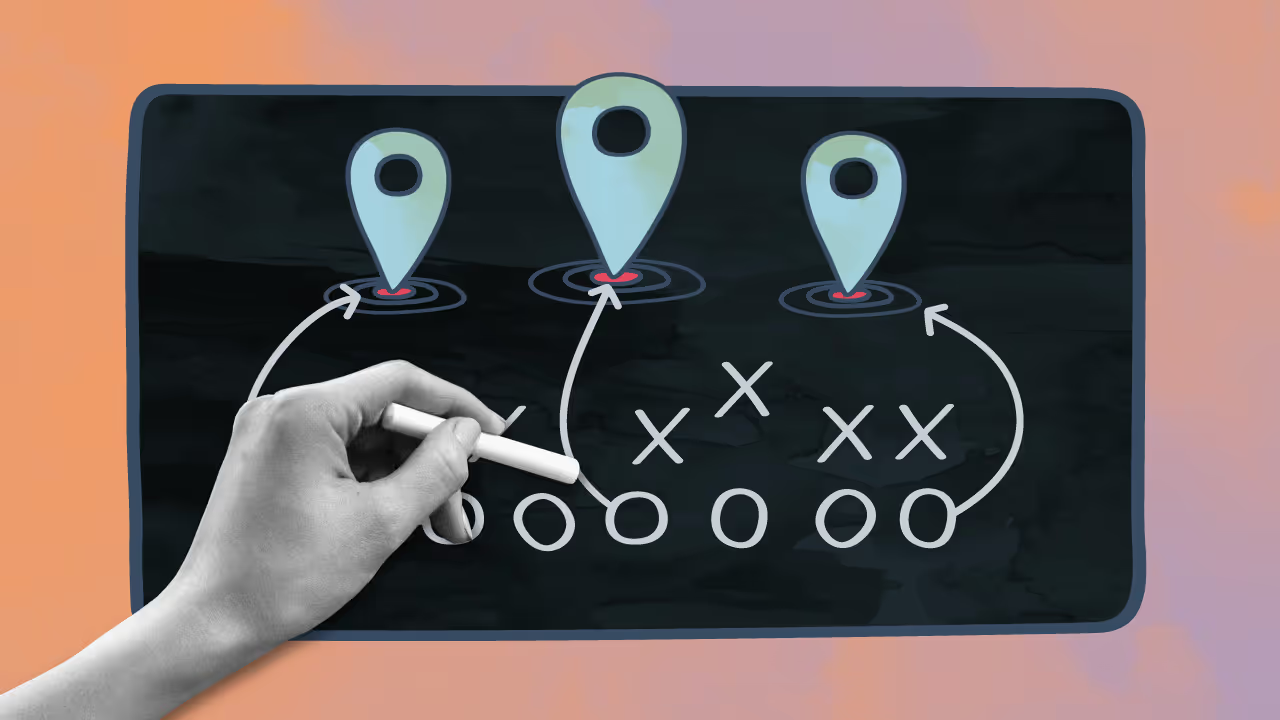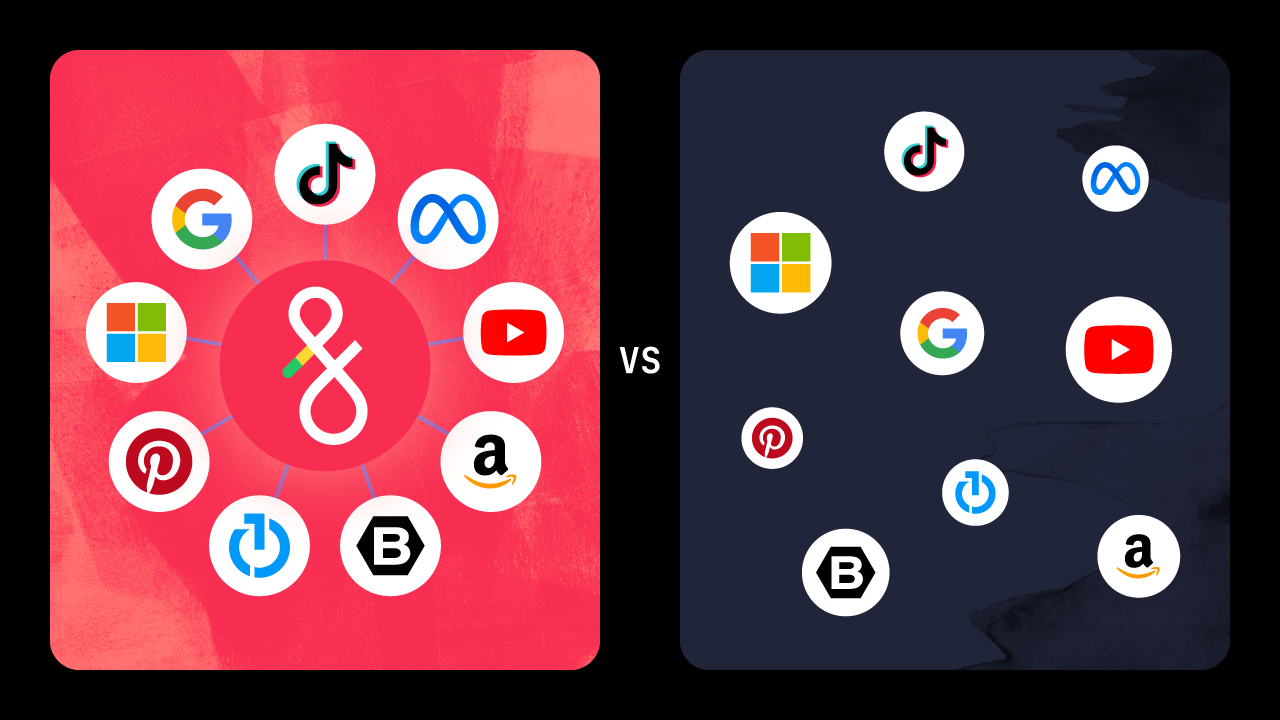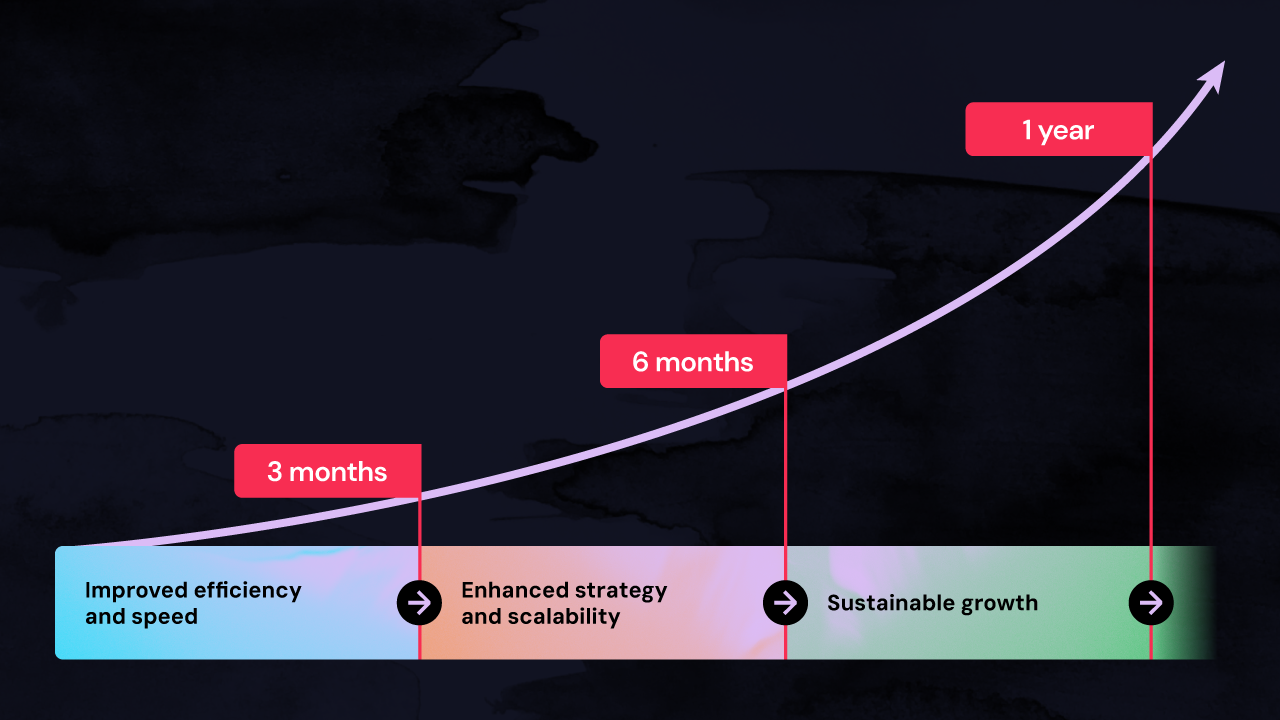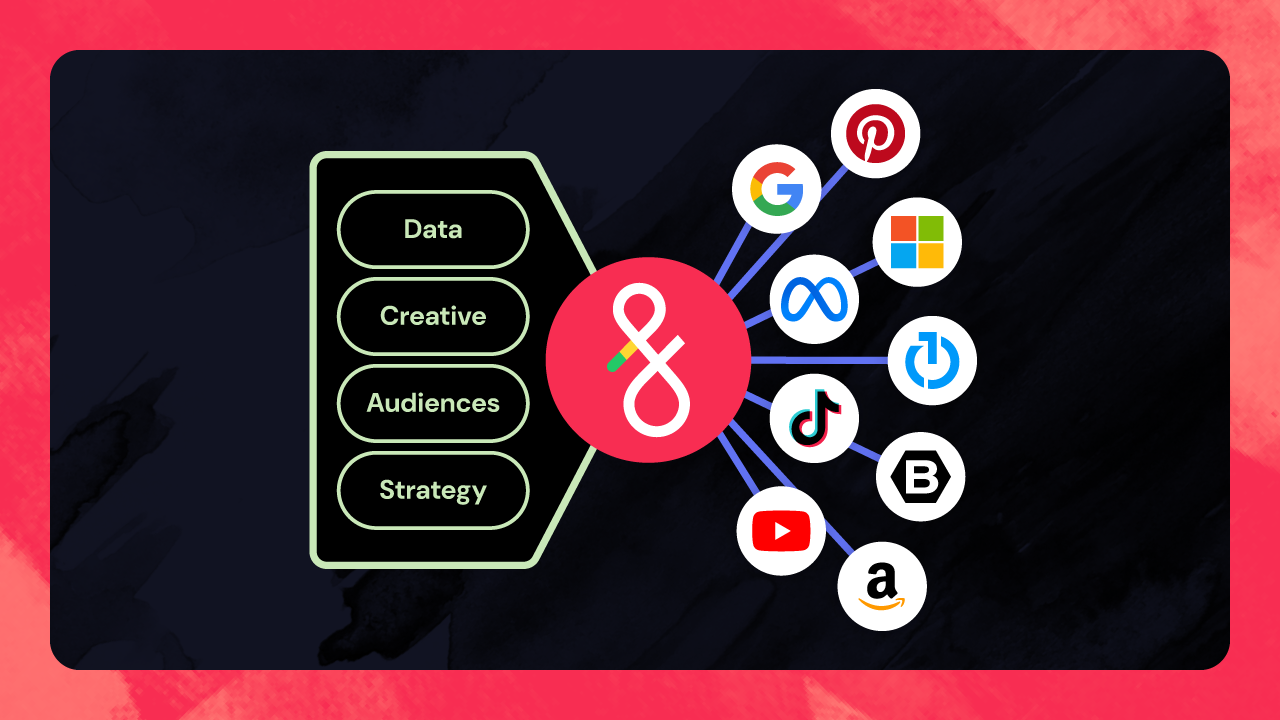Audience data (sometimes called first-party audience data or custom audience data) is one of the mos valuable assets in digital advertising. But activating audience data—in other words, turning it into reachable, targetable audiences across platforms—is a big challenge for many advertisers. This issue that will only become more acute as data sets grow more sophisticated and the advertising industry moves towards a "cookieless" future, in which first-party data and consumer privacy become increasingly important.
The good news is that there are a variety of solutions that make activating your audience data easier and more accessible than ever before. In this article, we’ll show you how to activate audience data at scale through digital audience activation strategies and local audience targeting.
What is audience activation?
Audience activation (or digital audience activation) refers to the process of converting primary audience data into live, targetable audience segments across advertising channels (e.g. programmatic, social platforms, Google Ads). It is the bridge between having data and using data.
In practice, audience data activation includes:
- transforming and structuring data for use in ad systems, such as a Digital Advertising Operating System
- the segmentation of audiences into segments like behavioral, demographic, or geographic
- pushing those audience segments or lookalike audiences to different ad publishing platforms
- continuously optimizing and measuring
In contrast, "audience targeting" is the act of selecting which audiences to bid on. Activation is the operational process of making that targeting possible.
Why does audience data activation matter for digital advertising?
Recent shifts across major digital advertising publishers, like Google Ads, highlight the growing importance of using first-party data to craft effective, localized ad strategies. As ad platforms move away from third-party cookies, you must increasingly rely on your own first-party data sources to build effective advertising audiences and lookalikes. To understand why this is the case, here's a short history lesson.
Back in 2023, nearly 75% of digital advertisers still depended on cookie-based targeting, with 16% of marketers saying that "the end of cookies will be ‘devastating’" to their businesses.
This continued reliance on third-party cookies is pretty staggering, especially considering that Google announced its Chrome cookie depreciation plan in 2020. The reluctance of advertisers to adapt to this significant change is understandable, though. Many advertisers argued a lack of resources and budget to explore and implement untested, cookieless solutions.
Then, in mid-2024, Google essentially said, “Just kidding” and scraped its cookie depreciation plans. This sent the advertising industry reeling once again. After nearly four years of working on targeting alternatives without third-party cookies in Chrome, was all your agency’s work for nothing?
Not exactly.
Even though Google changed its stance on going cookieless, Google is still drastically changing how advertisers can target audiences. For example, Google is still pushing Privacy Sandbox, which leverages APIs instead of cookies to protect individual consumer privacy while giving advertisers targeting tools. It’s a decent workaround, but it’s an imperfect solution if your agency wants to target users in the most meaningful and impactful way possible.
Let’s also remember that Chrome doesn’t rule the web. eMarketer estimates that nearly 90% of browsers will still be cookieless in the future, even with Google’s recent reversal on cookies.
Long story short: your agency must find viable audience-targeting alternatives that don’t rely on third-party cookies.
The answer? Using first-party audience data sets in your targeting strategies.
The most successful agencies approach the process holistically. We’ve boiled the best practices into the following “action plan” framework.
What are the key challenges in activating audience data for localized advertising?
Activating audience data at scale is hard enough. When you add the complexity of local audience targeting, new challenges emerge. Advertisers often run into the following hurdles:
- Fragmented data sources: Customer data often lives across CRMs, loyalty programs, and other digital platforms, making it difficult to unify and activate for localized campaigns.
- Data normalization and accuracy: Inconsistent or incomplete customer records (like missing addresses or duplicate profiles) can prevent precise audience activation in specific markets.
- Advertising privacy and compliance concerns: Localized targeting relies heavily on geographic and personal identifiers, which raises data-privacy challenges under laws like CCPA, GDPR, and evolving state regulations.
- Scale vs. customization trade-off: The more granular your segments are, the harder it becomes to scale without jeopardizing campaign performance (and stressing out).
- Platform and channel limitations: Not every advertising platform ingests audience data the same way, and some (like Google Ads for real estate marketing) impose restrictions on how localized you can get.
- Operational overhead: Without automation, activating and maintaining audience segments across mulitple channels, locations, or campaigns is highly resource-intensive.
If you want to successfully localize audience data, you must pair strong data governance with automation and scalable workflows. This ensures you can execute localized campaigns without losing efficiency at scale.
How to activate audience data at scale
Your audience data is a critical component of your core value proposition in an increasingly competitive (and cookieless) advertising environment. But how can you get the most value out of your audience data sets so it becomes your agency’s competitive advantage?
The way you structure, activate, and utilize data can make or break how accurately (and strategically) you can use audience data in your campaigns. These new advances in audience targeting and data-powered automation are creating a new paradigm.
To fully activate your audience data at scale, your team must navigate three key stages: data identification, data evaluation, and data segmentation. Each stage represents a critical checkpoint in the strategic journey from simply possessing data to unlocking its full potential.
Let’s take a look at these stages in detail.
1. Audit your first-party audience data for quality and structure
Before you can activate your audience data, you must audit for quality, normalization, and unique attributes. Identifying what sets your data apart from competitors or other industries can reveal significant competitive advantages and hidden opportunities.
Start by auditing your existing data with these questions:
- Do you know the breadth (the range of data points you've collected) and depth (the volume or instances of each data point) of your data?
- What makes your first-party data unique?
- How can your data “secret sauce” be utilized effectively in different strategies for your customers?
Data quality is equally important to evaluate. Is your data normalized and consistently formatted, or prone to manual errors? If your data is poorly formatted, it will impact your ability to scale with tools like automation and AI down the road.
Understanding the balance between deterministic data (data based on exact matches) and inferred data (which relies on analysis of various data points for identity assumption) is also crucial for evaluating your data's quality.
Once you know what you’re working with—and you’ve structured your data so it’s easier to scale—you’re ready to start extracting your data’s value.
2. Enhance your audience data value through clean room partnerships
With your data clean and usable, it’s time to start exploring the unique value your data brings to the table. Data clean rooms are a great place to start.
Data clean rooms are secure environments where data from different sources can be combined and analyzed without direct sharing. Data is shared in a clean room in such a way that enables collaborative analysis while maintaining privacy.
Using clean rooms helps you expand the depth and breadth of your data without compromising privacy. Clean rooms are a highly efficient way to extract meaningful insights from your audience data without diluting its uniqueness. In other words, your audience data becomes richer and more valuable without jeopardizing Personally Identifying Information (PII). This makes it easier to scale audience data activation across channels.
Collaborating with other parties within clean rooms can help you better understand and define what’s working with your targeting strategies. For example, let’s say you look at your data and find a user that converted on mobile. How can you figure out what finally got them to convert when mobile is a black box? Clean rooms can help.
“Clean rooms can help you define what’s working and what’s not,” said Taren King, Director of Product for Intuit SMB Media Labs in an AW360 podcast episode on data-powered advertising strategies. “By collaborating with different entities, you can get it to do a determination. You are building your first-party data but by collaboration with another source.”
By pinpointing the most valuable elements of your data, you can more easily segment your audiences to drive better results.
3. Build modular audience data segments for rapid activation
With your data structured correctly, the quickest way to activate audience data is using the “LEGO brick” segmentation strategy.
The “LEGO brick” strategy involves dividing your consumer data into super specific and modular segments (just like LEGO bricks). Each brick represents specific user behaviors or qualifiers, such as demographics, behavior, past purchases, or geography. These modular segments are the building blocks of audience activation. They let you mix and match segments to create hyper-targeted audience sets for digital ads, localized campaigns, or niche messaging.
For example, you can use your audience data segmentation bricks to build generalized campaigns that promote cold-weather running gear to prospects in the northern part of the United States. However, you can piece together multiple audience segment blocks for more nuanced targeting, such as serving trail running shoe ads to users who live in rural areas or visit hiking trails and serving road running shoes to users in urban areas or who have previously purchased reflective gear.
Granular audience data segmentation enhances targeting and ensures that audiences receive the most relevant information. You can take multiple “bricks” and combine them to build hyper-relevant audience segments. After all, the better you can target a user’s interests, the more likely they are to convert.
Good news: with these three stages complete, your data is set up so you can easily segment audiences and build custom, strategic campaigns.
But how can you possibly create all the necessary assets, write dozens (or hundreds) of different ad copy sets, and then build campaigns for so many unique audience segments? Activating audience data at scale using manual methods and workflows is a behemoth of a task—and cannot be done without automation.
How to activate audience data at scale with AI and advertising automation
Automation is the engine that powers audience activation at scale, eliminating AdOps friction and enabling real-time updates to your targeting segments. Instead, you can focus your time and energy on strategic objectives and running multichannel campaigns directly from the structured audience data and segmentation framework outlined above.
Automation not only saves you time when building and executing localized campaigns at scale, but it also reduces the human margin of error. Working directly from your data sources ensures that everything is accurate and up-to-date. Plus, you can even build in a checks-and-balances system to ensure that anything going out the door meets third-party regulatory requirements or brand standards.
Automation and AI can help you activate audience data at scale by:
- Dynamically updating targeting parameters as audience characteristics change, ensuring campaigns are always relevant.
- Generating personalized ad creative and copy tailored to specific audience segments using AI-powered content generation.
- Optimizing bid strategies and budget allocation across segments in real-time based on multichannel performance data and conversion patterns.
- Triggering campaign adjustments automatically when audience engagement metrics or conversion rates hit predefined thresholds.
- Analyzing performance trends to identify new high-value audience segments.
In short, automation you to scale how quickly you can execute operational tasks (like building nuanced ad copy for every audience segment) without exponentially scaling headcount or labor costs.
Fequently asked questions about audience data activation
Q: What is the difference between audience activation and audience targeting?
A: Audience activation is the process of converting data into actionable segments. Audience targeting is selecting which activated audience segments you bid on.
Q: How does local audience targeting relate to audience activation?
A: Local audience targeting is a use case of audience activation. Local audience targeting focuses on geographies (e.g. zip codes, cities, or radius targeting) after segments are built. It enables you to activate data in a hyperlocal way.
Q: When should I use audience data instead of broader targeting?
A: You should activate your audience data when you have valuable first-party data sets that differentiate you or your advertising strategies, when you want improved performance (better ROAS), or when privacy restrictions make mass targeting less reliable.
Staying ahead of trends in audience data activation and data privacy
While Google's reversal on third-party cookies might seem like a reprieve, the reality is clear: first-party audience data activation isn't just a backup plan. It should be your agency's strategic imperative.
To fully integrate first-party data into your ad strategies at scale, your agency needs:
- Well-structured data that showcases your (or your customers’) unique value
- Efficient processes that eliminate manual roadblocks
- Automation solutions that scale your operations without sacrificing personalization or compliance
Start by auditing your current data assets and operational workflows using this short playbook framework. This will help you identify where you're losing time, where your data needs cleanup, and which processes are optimal for automation. Remember: your first-party data is your competitive advantage. The more efficiently you can activate it across channels and campaigns, the more value you can deliver to your clients.
The agencies that will thrive in this new era aren't the ones with the most data. They're the ones that can activate data most effectively. By combining strategic data segmentation with automation tools that eliminate operational complexity, you can deliver the personalized, local targeting that clients demand while maintaining operational efficiency as your client base grows.
Oh, and if you want to learn more about how you can build an all-encompassing advertising strategy focused around your data sets, take a listen to the AW360 podcast episode where King and I share how your agency can build a data-powered advertising strategy and lessen your reliance on third-party cookies.






